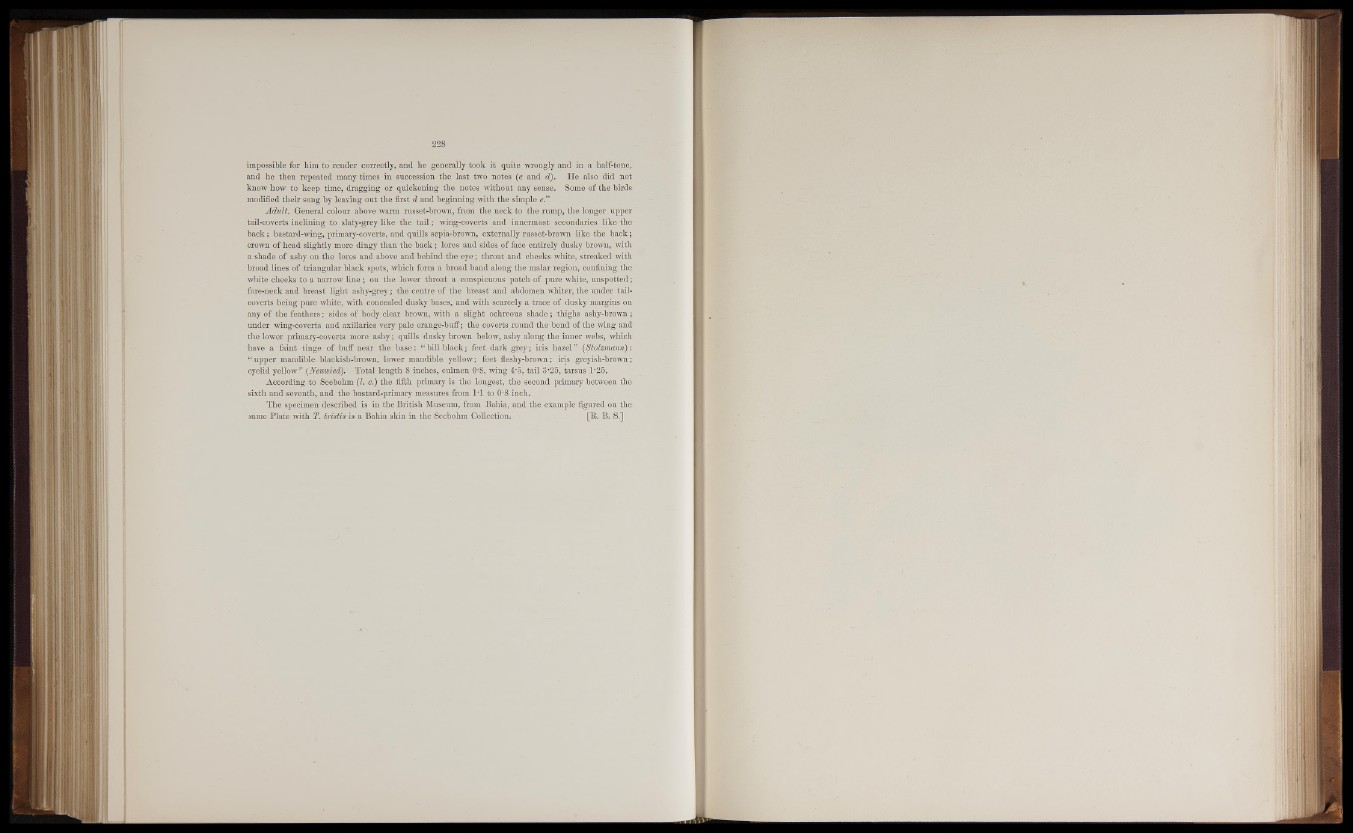
impossible for him to render correctly, and lie generally took it quite wrongly and in a half-tone,
and he then repeated many times in succession the last two notes (o and d). He also did not
know how to keep time, dragging or quickening the notes without any sense. Some of the birds
modified their song by leaving out the first d and beginning with the simple c.”
Adult. General colour above warm russet-brown, from the neck to the rump, the longer upper
tail-coverts inclining to slaty-grey like the ta il; wing-coverts and innermost secondaries like the
back; bastard-wing, primary-coverts, and quills sepia-brown, externally russet-brown like the back;
crown of head slightly more dingy than the back; lores and sides pf face entirely dusky brown, with
a shade of ashy on the lores and above and behind the eye; throat and cheeks white, streaked with
broad lines of triangular black spots, which form a broad band along the malar region, confining the
white cheeks to a narrow lin e ; on the lower throat a conspicuous patch of pure white, unspotted;
fore-neck and breast light ashy-grey; the centre of the breast and abdomen whiter, the under tail-
coverts being pure white, with concealed dusky bases, and with scarcely a trace of dusky margins on
any of the feathers; sides of body clear brown, with a slight ochreous shade; thighs ashy-brown ;
under wing-coverts and axillaries very pale orange-buff; the coverts round the bend of the wing and
the lower primary-coverts more ashy; quills dusky brown below, ashy along the inner webs, which
have a faint tinge of buff near the base: “ bill black; feet dark grey; iris hazel ” (Stolzmann) :
“ upper mandible blackish-brown, lower mandible yellow; feet fleshy-brown; iris greyish-brown;
eyelid yellow” (Neuwied).y Total length 8 inches, culmen 0'8, wing 4*5, tail 3'25, tarsus 1*25.
According to Seebohm (I. c.) the fifth primary is the longest, the second primary between the
sixth and seventh, and the bastard-primary measures from IT to O'8 inch.
The specimen described is in the British Museum, from Bahia, and the example figured on the
same Plate with T. tristis is a Bahia skin in the Seebohm Collection. [R. B. S.] -
mm